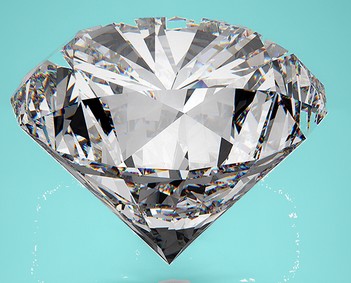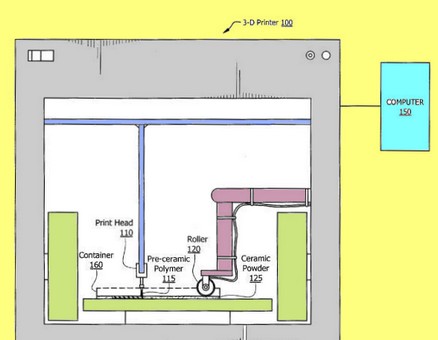


Lockheed Martin, the aerospace company, have filed a patent for a new kind of 3D printer.
The patent, filed on April 4 by inventor David G. Findley, describes a new way of 3D printing which would use a pre-ceramic
polymer and nanoparticle filler to create synthetic diamond objects of pretty much any shape you can dream up.
“[The] method includes depositing alternating layers of a ceramic powder and a pre-ceramic polymer dissolved in a solvent.
The alternating layers of the ceramic powder and the pre-ceramic polymer are deposited until the layers of the pre-ceramic polymer
form the shape of the object.
The method includes heating the deposited ceramic powder and pre-ceramic polymer to at least
a decomposition temperature of the pre-ceramic polymer.
The decomposition temperature of the pre-ceramic polymer is less than a sintering temperature of the ceramic powder.
-excerpt 3-D Diamond Printing Using a Pre-Ceramic Polymer with a Nanoparticle Filler patent, David G. Findley.
Each layer of the pre-ceramic polymer is deposited in a shape corresponding to a cross section of an object.
The method further includes removing excess ceramic powder that the pre-ceramic polymer was not deposited onto.”

What else is happening with 3D printing and diamonds?
Diamond technology specialists De Beers Technologies has invested in two Stratasys 3D printing systems,
the Fortus 360mc and a Dimension 1200es, to ramp up production of parts for equipment in the diamond industry.
Initially the company were outsourcing their 3D printed needs, but the addition of the two machines means round the
clock production at its diamond R&D centre in Maidenhead, UK.
The 3D printers are used to create automated methods for verifying and sorting diamonds, as well
as helping engineers make machines that ensure all synthetics and treatments can be detected.
“Whenever I come up with an idea the first thought is always ‘will it work?’.
Now we can put it on the Fortus overnight so that the next day we are testing it, assessing it,
and figuring out any limitations. We can then modify the design and put it back on the 3D printer overnight.
The following morning we are testing the next iteration.
In terms of reducing development time, it’s impossible to put a value on what 3D printing has saved us.”
-Senior Mechanical Engineer, Andrew Portsmouth, De Beers Technologies.
Courtesy by 3D Printing Industry ( Giorgio Comerio )
- Torna alla Prima Pagina - Back to the Front Page -
